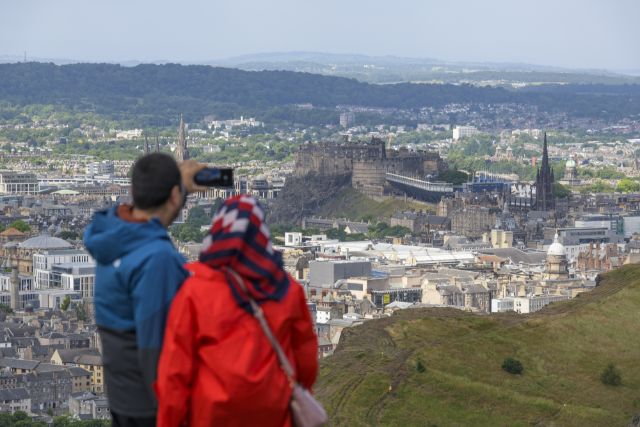Consultation to continue to protect Edinburgh’s World Heritage Site

The climate emergency, creating a sustainable visitor experience and the conservation and maintenance of buildings and public spaces are some of the actions included in the proposed new management plan for Edinburgh’s Old and New Towns’ World Heritage Site.
The plan, shaped by a programme of public and stakeholder engagement, was approved by councillors on the City of Edinburgh Council’s Planning Committee last month.
A further consultation has begun for eight weeks to give the public the opportunity to comment on the proposed plan before final partners’ approval by summer 2024.
The Site is managed by the City of Edinburgh Council in partnership with Historic Environment Scotland and Edinburgh World Heritage. All three partners work together to ensure that their actions protect the authenticity and integrity of the World Heritage Site while at the same time making sure it can operate as a thriving city centre.
The proposed management plan, which will sit alongside a two year action plan to ensure improvements continue to be made in the Site going forward, is a forward-looking strategic document which sets out the framework for the preservation and enhancement of the Site’s cultural heritage.
World Heritage Sites must have robust management systems in place to make sure their Outstanding Universal Value (what makes them of worldwide importance) is preserved and enhanced. This latest version of the management plan highlights five key themes taken from the public engagement to focus on.
These are awareness, appreciation and activity around WHS status; climate emergency; conservation and maintenance of buildings and public spaces; control, guidance, and contribution of new developments to city centre and sustainable visitor management.
Councillor James Dalgleish, convener of the planning committee, the City of Edinburgh Council, said: “Our World Heritage Site is of crucial importance to the future vision and development of the city. It has many iconic buildings and the Council works hard with partners to make sure any new development is appropriate and fitting with the rest of the site. In doing this work a wide range of issues are covered including the needs of residents, tourism, culture and climate change. The plan highlights actions under five themes to ensure that the Site continues to be a thriving built environment balancing heritage and the people living in it with any proposed development and changes to it.
“The more people who get involved with the proposed management plan, the better the protection we can provide for our incredible World Heritage Site. Residents’ views will help us to ensure that it continues to be well managed and of universal importance. I’d encourage everyone to take a look at the new draft plan and let us know what you think as Edinburgh’s World Heritage site belongs to everyone.”
Christina Sinclair, director of Edinburgh World Heritage, added: “Edinburgh is a stunningly beautiful place that is dear to millions of people from all walks of life. It’s World Heritage Status recognises it’s outstanding significance beyond international and generational boundaries, as well as being at the heart of our identity, wellbeing, economy, environmental goals and a powerful agent for challenging our past for a better future. The World Heritage Site Management Plan is vital to its conservation, as it is the agreed ways by which Outstanding Universal Value needs to be looked after.
“As the independent, expert charity dedicated to the active conservation of the World Heritage Site, Edinburgh World Heritage fully supports the draft World Heritage Site Management Plan. As part of our long-standing and impactful model, we are committed to working closely with our partners Historic Environment Scotland and the City of Edinburgh Council to realise the vision and actions of this important plan. Edinburgh’s conservation has always been due to the amazing work of its people, and it is so important your views are heard.”
Dr James Bruhn, head of world heritage and heritage policy at Historic Environment Scotland, added: “World Heritage Sites are global treasures that need to be protected for future generations, and the Old and New Towns of Edinburgh is such a treasure. These parts of Edinburgh have retained their historic urban form remarkably, even as the city has modernised and technology has advanced. The Old Town is an ancient capital with medieval closes and wynds, and New Town is the best-preserved example of eighteenth-century town planning in the United Kingdom.
“The management plan consultation presents an opportunity for people to have their say on how these unique sites are protected, whether they are Edinburgh residents or visitors who care about the towns’ future. The new 10-year management plan builds on the strengths of the existing plan, and it has been prepared alongside a two-year action plan that sets out immediate priorities.
“We are proud to have worked alongside City of Edinburgh Council and Edinburgh World Heritage to develop this management plan, which aims to be inclusive and broad while addressing concerns such as the climate emergency, and hope that anyone with a stake in Edinburgh’s future takes part in the consultation.”





















